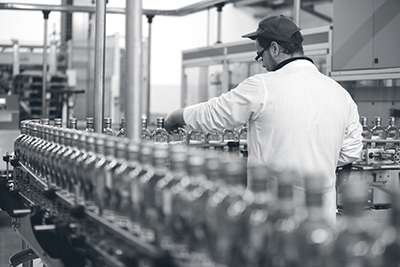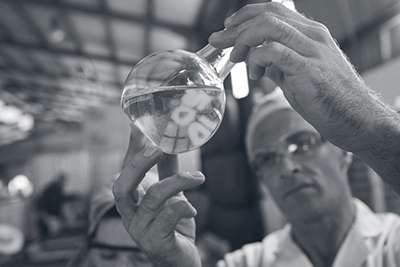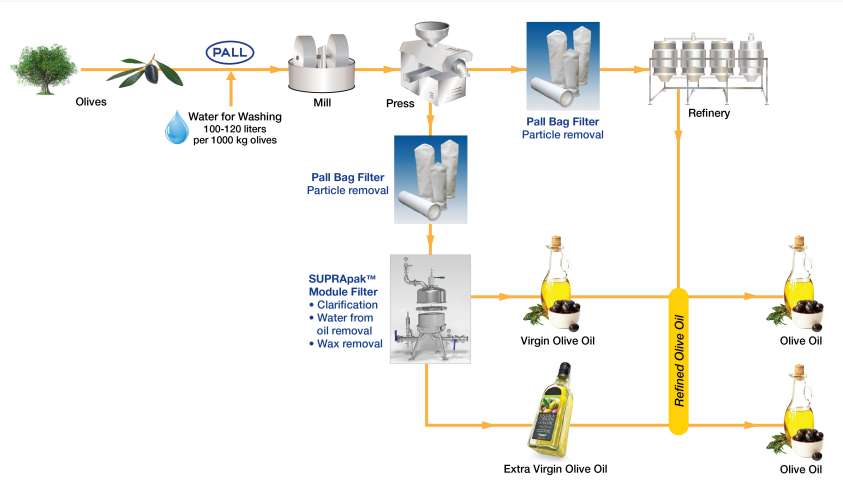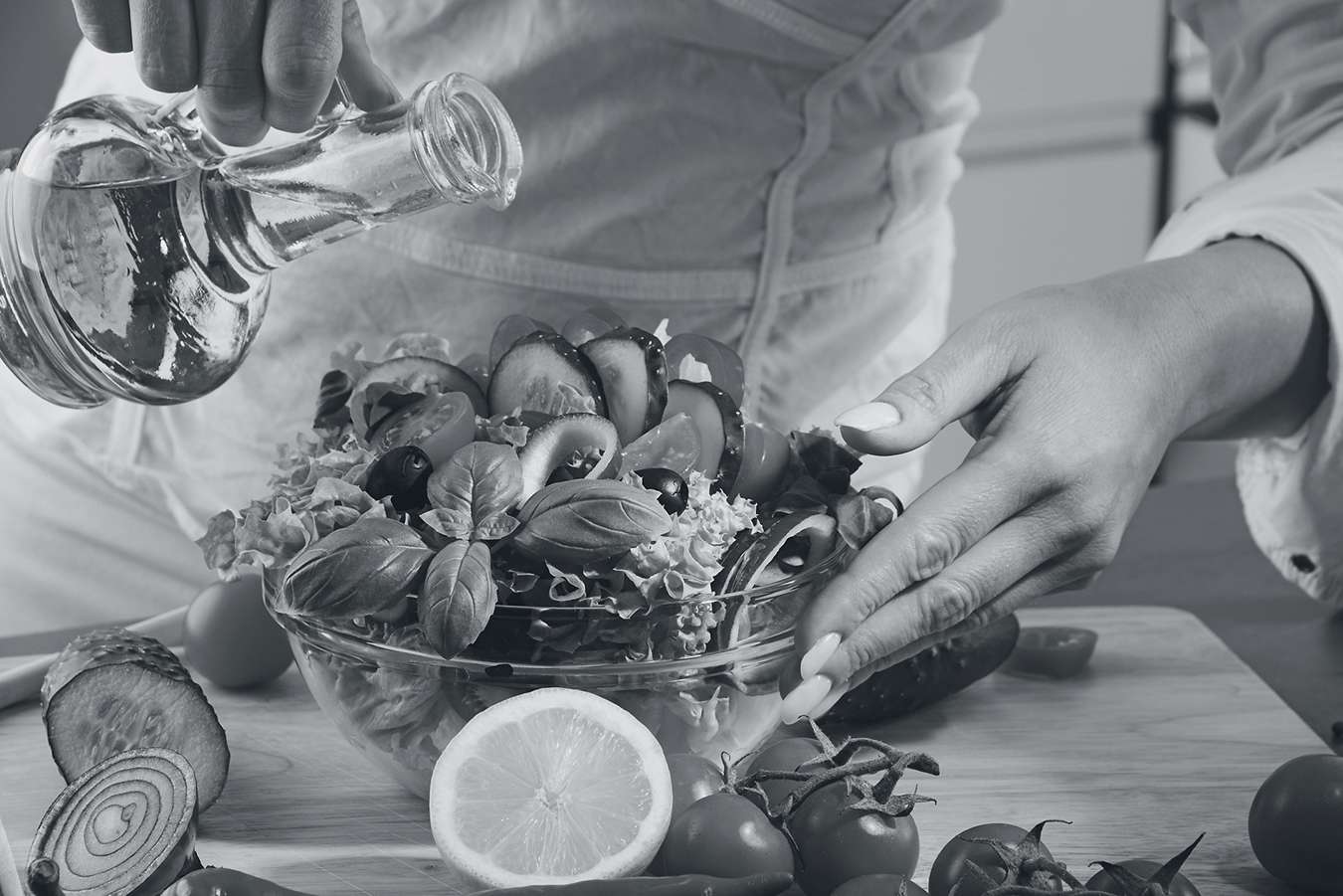Das azeitonas ao azeite
A produção de azeite manteve-se praticamente inalterada durante séculos e é realizada exclusivamente por processos mecânicos e não químicos. As azeitonas maduras ou prestes a amadurecer são moídas imediatamente após a colheita no outono com os seus grãos. O azeite é então separado da casca restante, polpa e caroço por prensagem ou centrifugação. É então essencial que as azeitonas sejam transportadas para o moinho no mesmo dia e processadas o mais tardar no dia seguinte. O azeite virgem extra (EVOO) é considerado um alimento com longa vida útil. Porém, durante o armazenamento o EVOO sofre diversas alterações de composição que reduzem sua qualidade. Se as azeitonas forem armazenadas por muito tempo entre a colheita e a prensagem, processos de fermentação indesejados começarão nas azeitona, o que significa que elas perderão rapidamente seu aroma fresco e crocante, reduzindo a qualidade do azeite final.
Remoção de partículas
A remoção de outras partículas também é essencial para a aparência e cor final do óleo. O óleo extraído da pasta de azeitona contém tecido vegetal, tornando-o naturalmente turvo. A turbidez pode deteriorar a qualidade, promovendo a oxidação do azeite. A oxidação não afeta apenas a aparência, mas resulta no desenvolvimento de odores e sabores rançosos. o que pode diminuir a qualidade nutricional e a segurança dos óleos, bem como reduzir o prazo de validade. A eliminação de partículas e o aumento da vida útil podem ser alcançados com soluções de filtração específicas que atendem aos níveis de qualidade esperados do azeite.






